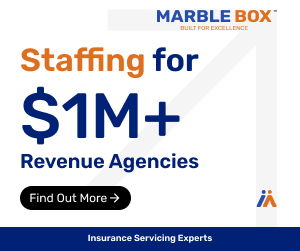by Jon Persky
Don’t think that the recently passed tax bill has simplified the tax code. While it is simplified for some, it is more complicated for others. Some people will see reduced taxes while others will see significant increases. It all depends on your situation and the type of entity you are. This article is highlighting just some of the major changes and how they might impact the typical insurance agency. You should speak with your tax professional to determine how the changes impact you.
C-corporations
While the C-corp rate has dropped to a flat 21%, it should be realized that most insurance agencies that are C-corps usually only left a small amount of profit in the corporation at the end of the year to avoid double taxation. In 2017 and prior years, the corporate tax rate on the first $50,000 of profit was 15%. For corporations that only leave $50,000 of profit in the corporation, they actually have a $3,000 tax increase under the new rules!
Many S-corps are considering converting to C-Corps to take advantage of the lower 21% tax rate. Be careful! This is a wise move only if you plan on building up cash reserves for a major purchase like an acquisition of another agency.
However, if you aren’t going to build up cash for a major acquisition, how are you going to pull the money out of the corporation? This is the issue of double taxation. If you pull it out as salary, it’s subject to ordinary tax rates as well as social security and Medicare taxes. If you pull it out as a dividend, it is taxed on the personal level at a rate of 0% – 23.8%. The 0% rate only applies for people with small incomes. Most agency owners will be paying anywhere from 15% – 23.8% on dividends. Even at the 15% rate, add that to the 21% corporate tax rate and you are still paying 36% in taxes. People in the highest 37% individual tax bracket would be pay 23.8% on dividends. Add this to 21% and the taxes total 44.8% vs. a personal tax rate of 37% if the agency was an S-corp.
One potential benefit is that agency owners of C-corps are allowed to deduct their healthcare premiums as a business deduction.
S-corporations and Pass-throughs
The tax act has created Section 199A, a new provision of the Code. It allows owners of sole proprietorships, S corporations and partnerships to take a deduction of 20% against their income from the business.
Section 199A is anything but simple, and the 20% deduction is far from guaranteed for agency owners. Claiming the new deduction requires navigating limitations, definitions, thresholds, and phase-ins and phase-outs. With no regulations and no form instructions, it may be a while before clarity is forthcoming.
About the only thing for certain is that smaller agencies will be able to deduct 20% of business income if the annual business income does not go past $157,500 for single filers or $315,000 for those filing jointly. There is then a phase out period of an additional $100,000 for those married filing jointly, $50,000 for single filers.
Also, remember that agency owners of S-corps are NOT allowed to deduct their healthcare premiums as a business deduction. They must take this deduction on their personal IRS Form 1040 and can only deduct medical expenses in excess of 7.5% of their adjusted gross income for 2018. This only helps the taxpayer if they are itemizing deductions.
Bye Bye Entertainment
As a way to reduce the tax rate down to 21%, Congress eliminated the entertainment expense deduction. While you can still pay for your own meal if you are traveling out of town and get a 50% deduction, you can no longer get the 50% for the carrier personnel, client, etc. that is eating with you. Golf course green fees, football tickets and the like are now no longer deductible. This applies to all types of business entities.
Capital Gains and Agency Sales
The new Tax Act did not make any change to the capital gains rates but did change the tax brackets. Effective January 1, 2018, the. 15% capital gains bracket is for those married filing jointly with a modified adjusted gross income (MAGI) of $479,000 or less. Any capital gain that exceeds this MAGI threshold is taxed at a 20% rate. For taxpayers filing as Single the threshold is $425,800. But it’s not as simple as just looking at the capital gains amount. You also need to factor in the rest of your income.
Assume the capital gain you receive in 2018 from the sale of your agency is $250,000 and you have $100,000 of other income. It’s simple, your capital gains rate is 15%. But what if you have a capital gain of $250,000 and $250,000 of other income? Then $229,000 of the capital gain is taxed at 15% and $21,000 is taxed at 20% (assuming you are married filing jointly). And if you have $250,000 of capital gain and $500,000 of other income? The full $250,000 of capital gain is taxed at 20%.
Unearned Income / Affordable Care Tax
There was hope that between potentially repealing Obamacare and the changes to the tax code that the 3.8% tax on unearned income (which includes capital gains) would go away. No such luck. This 3.8% tax that helps pay for Obamacare is for unearned income in excess of $250,000 for a married couple or $200,000 for an individual. It functions the same way as the capital gains tax in that you must look at your MAGI. If you have $250,000 of capital gains and no other income, you don’t pay the tax. But when you combine the capital gain with your other income, you pay 3.8% of tax on every dollar of capital gain that exceeds the $250,000 MAGI threshold.
Don’t Forget the 5 Year Rule
Earlier in this article there was a discussion of potential benefits to being a C corporation. Remember that agencies that are C corporations run into significant tax issues when selling to a third party. Most buyers insist on an asset sale so that they can amortize the purchase price and so they don’t acquire hidden or unknown liabilities. However, an asset sale of a C corporation can result in double taxation for the seller, whereas the asset sale of an S corp, an LLC, or a sole proprietorship is taxed one time at the capital gains rate.
If the seller wants to convert from a C corp to an S corp he has to wait five years before getting full tax treatment as an S corp. Failure to wait for the full waiting period results in the sale being subject to the built in gains tax at a flat 35%.
Summary
The recent change to federal tax law is very complex for business owners. Since no regulations, forms or instructions are currently available, it could be months before questions can be answered by your tax professional. Nevertheless, you should speak with you CPA early and determine a plan for your particular situation
About the Author:
Jon Persky, CIC, CPA, PHR
Jon is the President of Optimum Performance Solutions, LLC (www.optperform.com), an insurance agency consulting firm providing valuation, merger and acquisition, agency perpetuation, strategic planning, and marketing and retention services to insurance agencies nationwide. Jon is on the national faculty of the Society of Certified Insurance Counselors and lectures on agency management topics throughout the United States. He can be contacted at 813-835-7337 or jon@optperform.com.
Looking to start an Agency? Get detailed information by reading our Guide to Starting an Insurance Agency















